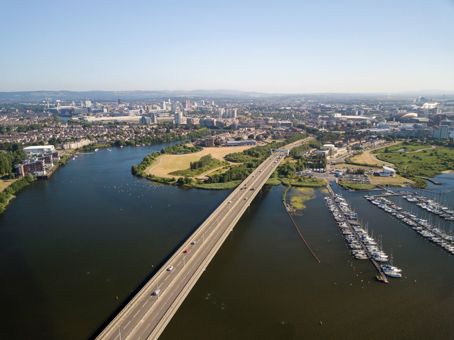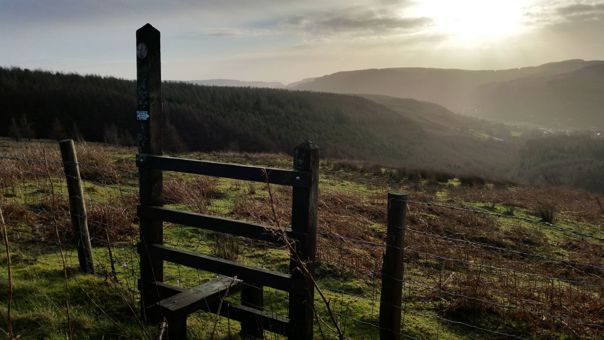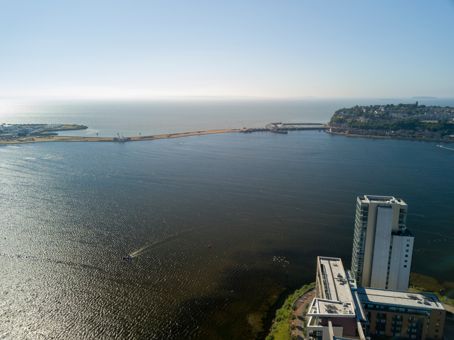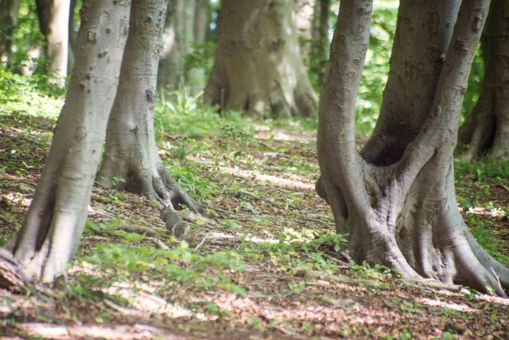Building resilient ecosystems
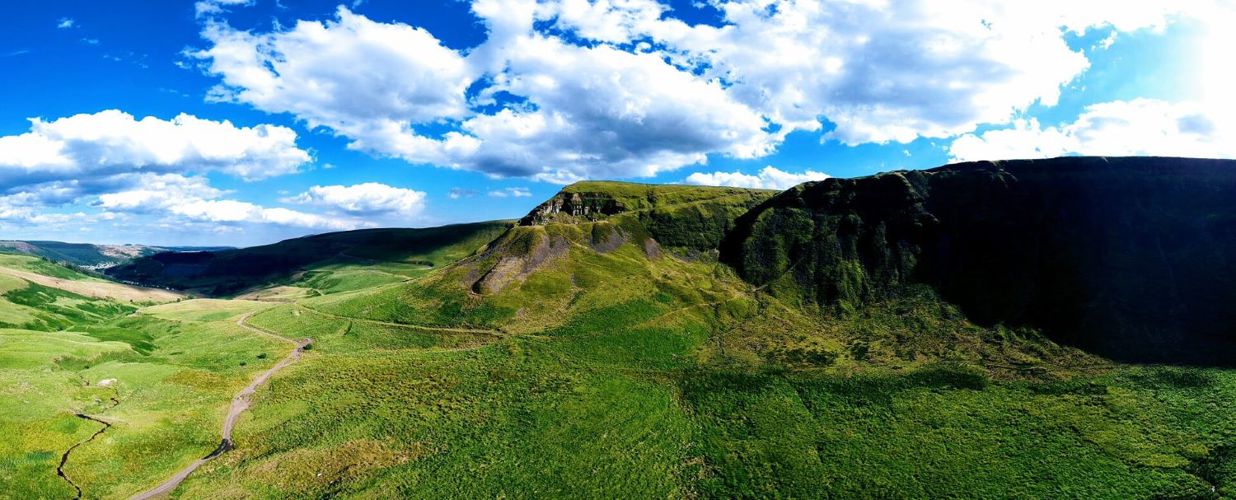
Why this theme?
We face two immense challenges when it comes to the Sustainable Management of Natural Resources. The first is climate change. The second threat is the loss of our biodiversity - the variety of life found on Earth and the communities and habitats in which they live. This brings us to ecosystems; large communities of living organisms, for instance plants and animals, that live in a particular area and interact with each other.
Here in South Central, we are fortunate to have exceptional ecosystems on our doorstep. Take, for example, ffridd (pronounced ‘freeth’), an important mosaic of habitats often found on the slopes of valleys which not only connect upland and lowland species, but also forms a physical and cultural backdrop to the local communities, and acts as a bridge between urban, semi-natural and agricultural ecosystems.
We need to value what we have and protect it. Our ecosystems are under threat on several fronts; inappropriate land management, pollution, unsustainable development, invasive non-native species and climate change.
There’s also a sense that we, as a society, perhaps don’t always fully appreciate the natural world around us. For instance, some areas of hillside ffridd can be a fire hazard and, therefore, a potential risk to property and air quality. However, when well-managed, ffridd has a high biodiversity value and poses a lower wildfire risk, as well as delivering wider ecosystem services and benefits such as flood mitigation, carbon sequestration and opportunities for recreation.
We need to protect and rebuild our ecosystems so that they are healthy and resistant to any potential threats.

If we do this, we will enhance our well-being while at the same time enjoying and protecting nature for its intrinsic value. Wales’ natural resources are closely linked to the country’s economic, social and cultural wellbeing, so it more than makes sense. For example, £2,870 million is generated by tourism alone every year in Wales.
In South Central, working with our partners, we now understand where to focus our efforts to build resilience within ecosystems, making them more resilient, valued and beneficial to our communities. We developed Ecosystem Profiles in order to broaden our understanding of ecosystems themselves and the services they provide for well-being.
The seven key ecosystems in South Central are:
- Coastal
- Freshwater
- Grasslands
- Peatlands
- The Valleys
- Urban
- Woodlands

Please use the feedback boxes at the bottom of the page to get in touch and to access the ecosystem profiles.
The Ecosystem Profiles are intended to provide an evidence base for influencing future policy making and assisting with planning and delivery. They ensure that grassroot technical knowledge and experience is complemented by the broader national evidence concerning ecosystems, for example, from SoNaRR2020.
What would success look like?
The profiles set out how to build resilience in each of the ecosystems. Greater resilience means greater well-being benefits for people living and working in South Central. We now need to take further action, and that can only happen through continued engagement and working with others.
Ultimately, it’s about protecting and restoring nature to ensure the provision of ecosystem services and benefits now and into the future. Our approach is to encourage the Sustainable Management of Natural Resources to have the highest level of resilience appropriate to the desired land use. This will look different in different places, for example nature reserves like Merthyr Mawr will continue to be recognised, protected and managed for their internationally important biodiversity, whereas the large extent of high quality agricultural land needs to build resilience and provide food sustainably. We need to build on projects delivering change.
We know that our ecosystems play a critical role in mitigating and adapting to climate change. Without properly valuing our ecosystems, together with the mitigation and adaption benefits they provide, we run the risk of creating counterproductive outcomes that reduce ecosystem resilience.
In South Central , we work in a joined-up way, seeking opportunities to manage for climate mitigation and adaptation, and to address the needs and opportunities for local communities, while at the same time avoiding conflict between different objectives. Delivery can then be both planned and opportunistic as partners decide on their own way ahead. Change isn’t going to happen overnight but, together, we are working on it in the longer term.
Who have we worked with to date?
NRW has liaised with a wide range of organisations including the Welsh Government, local authorities and other non-governmental groups since the start of the Area Statement process in 2018. In the process we have developed a shared understanding of ecosystem resilience, how to build it and the action required.
We recognise that we’ve had limited external involvement with other land management sectors, for instance agriculture and forestry. However, we have had national engagement with these sectors and will be seeking opportunities for meaningful engagement as we move forward.
What are the next steps?
We still have lots of work to do on this theme. We will be engaging closely with partners to deliver the priorities of the Natural Resources Policy.
In South Central Wales, that will include:
- We will work with the NRW team to implement the priorities identified in the ecosystem profiles, through our internal business planning. For example, we need to develop a Local Approach to Woodland for the South Central Wales area, building on the Woodlands Ecosystem Profile, to ensure the right trees are planted in the right place and existing woodland is managed appropriately.
- Develop Resilient Ecological Networks, in line with the Natural Resources Policy. This will provide supporting evidence to public body planning regarding biodiversity, and land management schemes, for example the Sustainable Farming Scheme.
- We will work with Local Authorities and support them to give regard to the Area Statement and to use the evidence base, for instance Ecosystem Profiles, to support their relevant statutory obligations, such as the Environment (Wales) Act section 6 duty, while also identifying criteria such as Resilient Ecological Networks to be used in local planning decisions and Green Infrastructure Assessments.
- We will work with Public Service Boards (which aim to improve joint-working across all public services in local authority areas throughout Wales) and their member public bodies, such as Dwr Cymru Welsh Water and Health Boards, to ensure that ecosystem resilience and green infrastructure is a key consideration in future well-being assessments and well-being plans, meeting the goals of the Well-being of Future Generations (Wales) Act 2015.
- We lead on ecosystem resilience understanding in South Central Wales and work with community and charitable partners, such as Local Nature Partnerships, on local plans and projects to maintain and enhance ecosystems and their services and benefits, such as local Nature Recovery Action Plans and living landscapes.
How does what we’ve proposed deliver Sustainable Management of Natural Resources?
A healthy, resilient ecosystem provides us with essential and intrinsic benefits to our lives and general well-being. To understand this, Ecosystem Profiles identify opportunities to improve the health of ecosystems through nature-based solutions, providing a bigger picture of how they fit together enabling us to make priorities regarding decision-making and operational delivery.
This theme, in tandem with the Connecting people with nature theme, provides the evidence base, mechanisms and influence through which all decisions can be considered in order to manage natural resources in South Central in a sustainable way.

How can people get involved?
In South Central, we are committed to working in an open and transparent way. With that in mind, we want to encourage people to get involved in building resilient ecosystems. The Area Statements process allows us to establish new ways of working which will be identified as we develop the next steps. Please use the feedback boxes at the bottom of the page to get in touch and find out more.
To get in touch with your Local Nature Partnership and see their local Nature Recovery Action Plan please follow the relevant link below:
To see mapping information for your area and topic of interest, please go to the Natural Resources Wales / BETA: Wales environmental information portal

